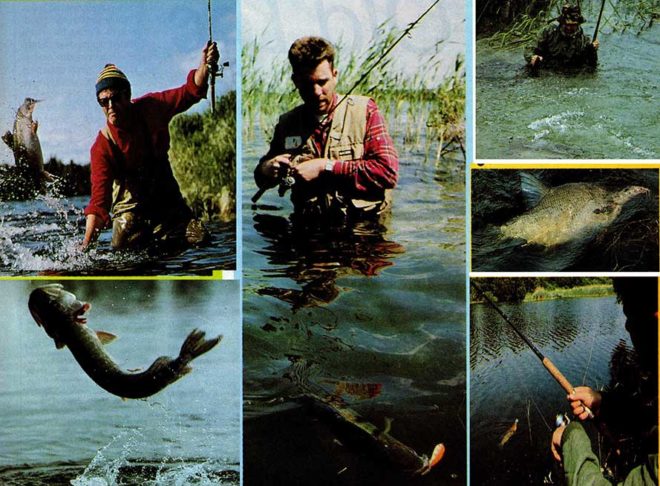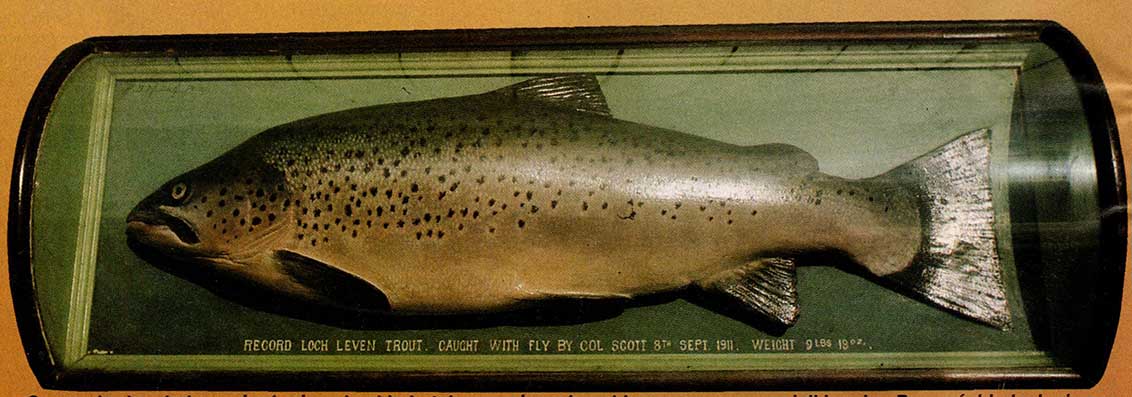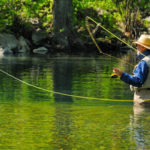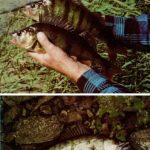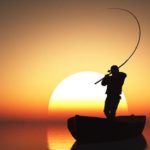Każda ryba walczy trochę inaczej. W chwilę po zacięciu prawie zawsze można się jednak zorientować, czy jest to szczupak, sandacz, pstrąg, czy też na przykład lipień.
My wędkarze znani jesteśmy z gawędziarstwa, gawędziarstwa graniczącego nawet z przesadą. Nic więc dziwnego, że gdy w jednym ze swoich artykułów napisałem kiedyś, iż „ podczas holu prawie zawsze poznaję, z jaką rybą mam do czynienia i to zanim ją jeszcze zobaczę”, mój redaktor naczelny od razu „wziął mnie na hak” i zażyczył sobie dokładniejszych wyjaśnień. Był to najlepszy sposób, aby sprowokować mnie do napisania poniższego artykułu. Wiele gatunków ryb można poznać już po samym sposobie brania. Niekończące się podrygiwanie spławika, lekkie przytapianie i wyskakiwanie na powierzchnię, przesuwanie się o kilka centymetrów raz w jedną, raz w drugą stronę pozwala przypuszczać, że naszym czerwonym robaczkiem akurat zainteresował się lin. Po energicznym zniknięciu spławika po skosie możemy się przygotować, że za chwilę prawdopodobnie nastąpi bardzo długie odejście po prostej, a uciekający karp pokaże nam, co to znaczy holować rozpędzoną podwodną lokomotywę. Stosowana technika wędkarska, rodzaj przynęty, pogoda, pora roku oraz sam rodzaj łowiska w znacznym stopniu ułatwiają domyślenie się, jaka to ryba walczy na drugim końcu żyłki. Na temat łowiska mogę powiedzieć tylko tyle, że tej samej wielkości leszcz trochę inaczej walczy w jeziorze, a zupełnie inaczej poniżej zapory lub w miejscu o w miarę spokojnym prądzie.
Pierwsze płocie moich synów.
Dorosła ryba zawsze testuje akcję wędziska, czasami nawet aż do granic wytrzymałości i na tej podstawie można już wyciągnąć jakieś wnioski, natomiast nerwowe trzepotanie się na haczyku i delikatne przyginanie szczytówki zawsze oznacza drobnicę. Obydwaj moi synowie także bardzo szybko opanowali sztukę rozpoznawania ryb zaraz po zacięciu. Już podczas naszej pierwszej wspólnej wyprawy na ryby wiedziałem, że na okrzyk „płotka!” nie muszę podchodzić z podbierakiem. Z dumą przyglądałem się, jak moi dwaj następcy tronu z minuty na minutę stają się coraz bardziej zapalonymi wędkarzami, a na brzegu lądują jak najbardziej wymiarowe płotki. Duża płoć walczy w bardzo charakterystyczny sposób. Krótko odskakuje na boki, często też zmienia kierunek ucieczki. Trwa to jednak nie dłużej niż jedną minutę. Później nawet największa płoć pozwala się w sposób kontrolowany holować do brzegu lub łodzi i chociaż walczy o życie do samego końca, wprowadzenie jej do podbieraka nie jest zbyt trudne. Jeżeli łowimy w pobliżu trzcin lub grążeli, a do tego tuż pod powierzchnią, to skośnie znikający pod wodą spławik prawie zawsze oznacza wzdręgę. Ryba ta walczy prawie tak samo jak płoć, chociaż czasami odnosi się wrażenie, że jest trochę silniejsza. Leszcz po zacięciu zawsze sprawia wrażenie bardzo zaskoczonego. Bez najmniejszego trudu daje się odciągnąć o metr lub dwa z zanęconego łowiska. Dopiero później „przedstawia się” wędkarzowi nadając do niego sygnały alfabetem Morse’a. W rzece leszcz podczas holu ustawia się bokiem w poprzek prądu, a że jego boki mają sporą powierzchnię, odnosi się wrażenie, iż jest to bardzo duża ryba. Leszcze o masie ponad 1,5 kg próbują także krótkich i dość energicznych ucieczek, po których zawsze ustawiają się bokiem do wędkarza.
